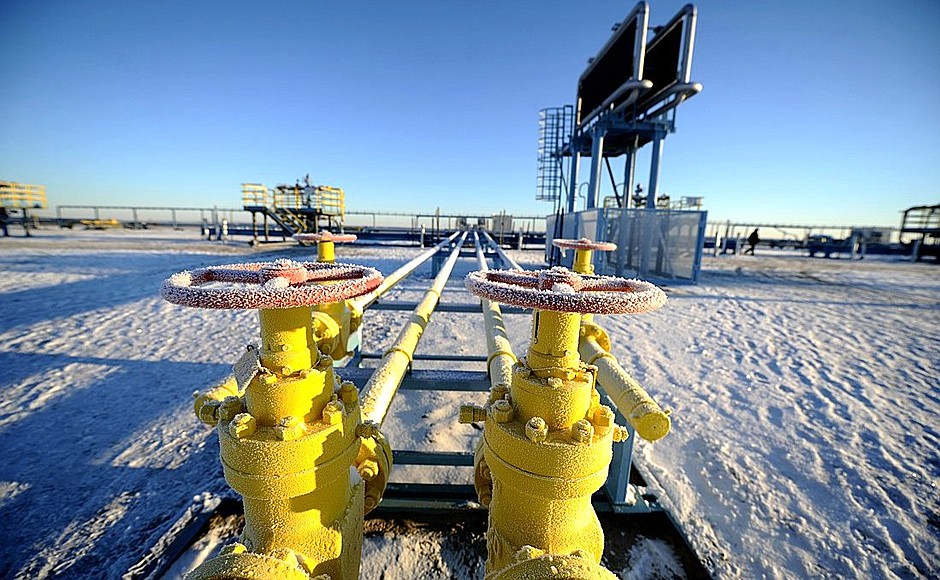On the 13th of May the Russian government adopted the general framework for developing the country’s oil and gas industry until 2035 prepared by the Ministry of Energy. According to the strategy, Russia is to maximize the extraction and monetization of hydrocarbons before the world completely transitions to zero- and low-emission sources – Mariusz Marszałkowski, editor at BiznesAlert.pl, writes.
Status quo
Russia is aware of the dynamics behind the changes in the world economy, including in the energy sector. The growing restrictions on emissions, abandoning investments in fossil fuels, debates on taxing products whose manufacturing causes high emissions put a country, which is so dependant on revenue from hydrocarbons, before a huge challenge. In order to prepare for the coming perturbations, the Ministry of Energy formulated plans to develop the hydrocarbon industry until 2035. The first part of the document deals with the oil sector, the second with gas. There are three scenarios for each sector – optimistic, realistic and pessimistic. However, it is not a breakthrough document, and especially not a reformist one.
Oil remains the foundation
Oil is the most important hydrocarbon extracted in Russia. The revenue earned on oil export is responsible for about a third of the entire budget income. According to the government plans, which are included in, among others, the Russian Federation Energy Strategy Until 2035, in the next 15 years the oil sector is to focus on increasing output at currently exploited and known oil deposits, as well as upping oil processing at domestic refineries.
Oil production is to reach a peak in Russia between 2027 and 2028. During that time the annual output is to reach between 504 and 590 million tons a year. However, that will depend on the variant of the scenario in the strategy and on the future of the cap on oil production, which was introduced as part of the OPEC+ deal.
It is expected as much as 494-520 million tons will be extracted in 2021 and 490-522 million tons will be produced in 2022. The final result depends on the future of the OPEC + deal. To compare, in 2020 the extraction in Russia was at 476.4 million tons.
Investments in the extraction sector are to grow until 2027. Between 2021 and 2025 Russian companies will invest from RUB 6.31 trillion (USD 85.7 billion) up to RUB 8.23 trillion (USD 113 billion). Between 2026 and 2035 the total expenditure on new investments in the extraction sector are to reach between RUB 14.6 trillion (USD 200 billion) and RUB 19 trillion (USD 260 billion).
These investments are to contribute to increasing oil reserves by 10.4 billion tons in the next 15 years. The level of replaceability of the old deposits with new ones is to reach about 1.2 a year, which means each year new deposits will be discovered that have 20 percent of oil more than the volume that had been producted. Interestingly, the document also assumes that the majority of the new discoveries will be made in areas that are already being exploited, including Western Siberia, the Tyumen and Komi regions, the Volga and Caspian region.
The leading oil producers, such as Rosneft and Gazprom Neft are increasingly more interested in the Arctic, where they are hoping to discover new „unique” oil deposits with over 300 million tons of oil. So far the biggest Russian deposit in the „unique” category is the Samotlor Field located in the Khanty–Mansi Autonomous Okrug, whose exploitation started in 1967. It is estimated that it holds 7.1 billion tons of oil and gas condensate.
In 2020 Russia took an inventory of its oil fields and verified 60 percent of licenses that have the technological capability for exploitation. The works pertained to 362 extraction licenses in total and identified a reserve of 17.2 bn tons of oil. The inventory did not include oil fields placed in different legal and tax regimes (e.g. SRP licenses (production split), licenses on a special tax regime (NDD), or such deposits as Priobskoye and Samotlor).
Profitable extraction is possible in the case of 36-64 percent of those fields, depending on the prices on the world’s oil markets. The document says that it is necessary to simplify tax regulations and introduce tax exemptions to facilitate oil extraction in areas where the profitability of extraction is low in the existing fiscal and cost framework.
The document also includes price prognoses for oil (Brent as the reference brand) in the perspective of the next 20 years. Authors point to the fact that the prices above 50-60 percent result from the decisions made by the OPEC+ group, and from halting investments in the extraction sector between 2020 and 2022 due to the COVID epidemic. The average oil prices in the coming years will be as follows:
– 2025 – USD 68 per barrel
– 2030 – USD 70 per barrel
– 2035 – USD 73 per barrel
– 2040 – USD 71 per barrel
The document also identifies the main challenges the oil sector will have to face:
– Drop in demand for oil caused by decarbonization processes;
– Unfavorable tax and legislation environment in, among others, EU states, which may lead to imposing additional taxes on hydrocarbons and oil products;
– Boom in the e-mobility sector and alternative transport fuels,
– Lack of possibility of acquiring loans for new investments in the oil sector due to unfavorable bank policies;
– Russian companies at a threat of being pushed out from their traditional markets by competition (this fits to, among others, Poland, which is replacing the supply from Russia with oil from the Middle East or the US).
This is why the authors’ recommendation is to increase the export of oil products and oil as much as possible. Oil is perceived as the best way to acquire foreign currencies, with the least amount of effort and investments.
Is gas safe?
The adopted strategy does not elaborate on natural gas as much. This stems from the fact that, among others, gas export has a lot smaller participation in the federal budget in comparison to oil exports.
Either way, contrary to oil, the gas sector is expected to constantly grow in the next 15 years. The demand for gas will continue to climb, because the world’s economies are phasing out energy generation sources that produce the most emissions, such as coal or oil (tar sands). In order to ensure an uninterrupted supply of power, and at the same time lower net emissions, companies and states will invest in gas. In the Russian strategy, natural gas is also seen as one of the main elements important for producing alternative fuels, including hydrogen. Also in transport, oil may be driven out by gas, e.g. LNG or LPG, which generate less emissions and are safer for the environment.
Russians forecast that gas production in 2035 will reach between 838 bcm and 1.34 tcm, depending on the variant (pessimistic, realistic, optimistic). In 2020, 693 bcm of gas was produced in Russia.
Export (via pipes and LNG) is to reach between 330 bcm and 471 bcm a year. In 2020 Russia exported 242 bcm.
The production of LNG will hoover between 88 bcm and 156.5 bcm a year and is to constitute between 26 and 32.6 percent of the entire gas export. This is important, because it will necessitate the increase of export to countries, which have not been the traditional clients of Russian gas companies. In 2020 Russia produced 41.7 bcm of LNG, which constituted 17.3 percent of export.
Additionally, expanding the gas grid will also increase the domestic consumption of natural gas. In 2035 according to three scenarios, the internal demand will be at:
– 535.9 bcm
– 562.1 bcm
– 603.5 bcm
In 2020 Russia used 464.4 bcm of gas.
Against the West
Just like the document title suggests, the strategy for developing the hydrocarbon industry in Russia in no way deals with ways to decrease its importance for the Russian state. On the contrary, Russia will try to get out of the probably final years of hydrocarbon prosperity as much as possible, and increase its revenue from oil. The strategy also reveals that crude oil usage will be upped to drive the growth of Russia’s petrochemical industry. Despite the fact that in the next 20-30 years oil will lose its importance as a fuel that drives transport, it will not disappear completely, because it will remain an important resource in, among others, production of artificial materials and the entire chemical industry.
Russia will not follow in the footsteps of, e.g. Denmark, which decided to shut down its hydrocarbon industry by 2050. It is also worth stressing one important thing. In the next five years Russia is planning to pump into oil extraction between USD 85 and 113 billion. To compare, after countless arguments Russia dropped its support for renewable energy sources in the years 2025-2035 to USD 2.6 billion.
This shows how, despite numerous assurances, Russia really views the fight against climate change and combating its consequences. Soon Russia will reach a moment when it will have to decide whether to transform its hydrocarbon economy to one that is more friendly towards the environment and more socially and financially sustainable. However, this scenario is not treated by the local political elites seriously. The political and oligarchic system, which revolves around hydrocarbons will stay on that raft until the very end, and the rivalry over the dwindling funds may become increasingly more violent.









